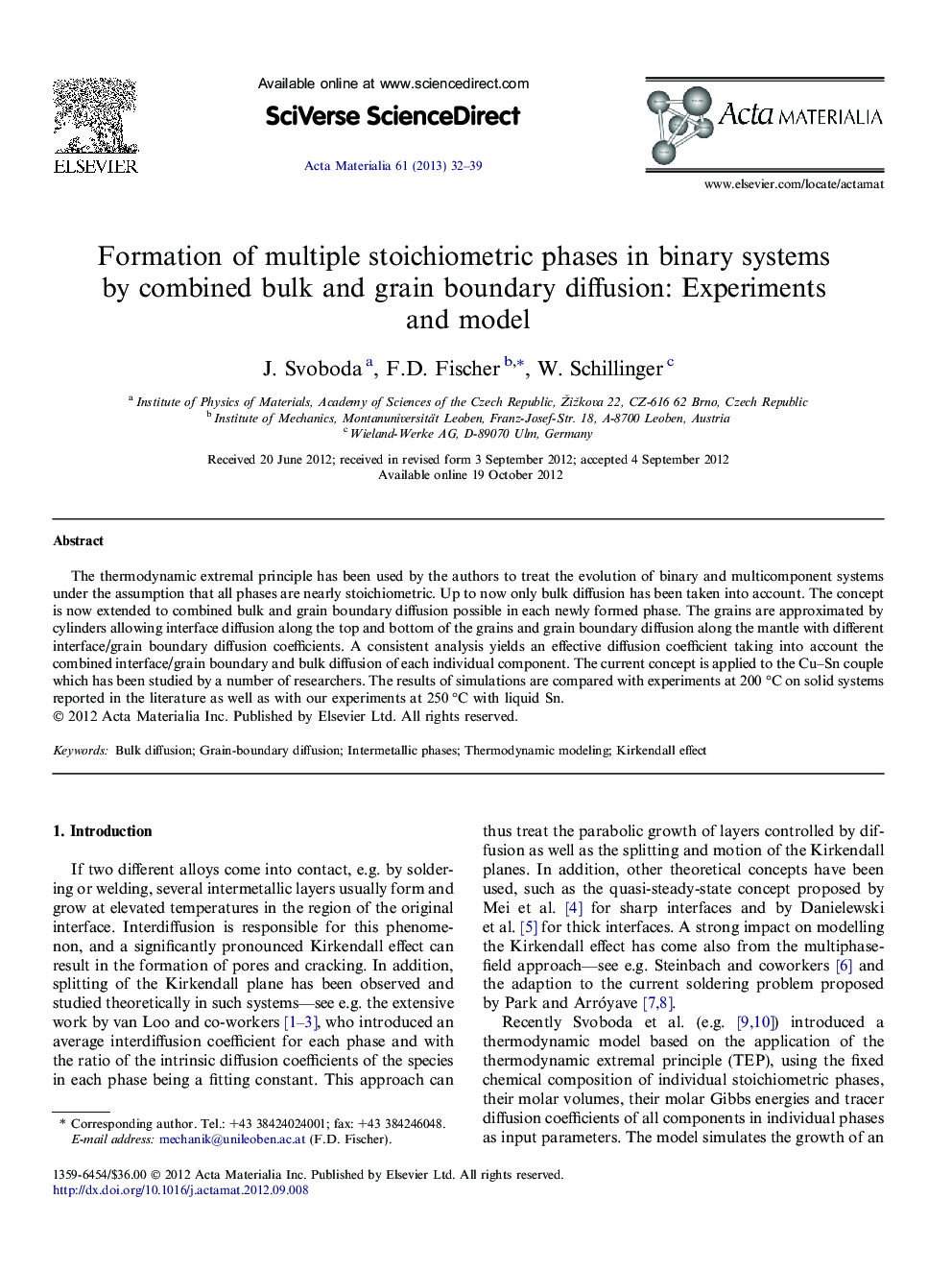| Article ID | Journal | Published Year | Pages | File Type |
|---|---|---|---|---|
| 10620305 | Acta Materialia | 2013 | 8 Pages |
Abstract
The thermodynamic extremal principle has been used by the authors to treat the evolution of binary and multicomponent systems under the assumption that all phases are nearly stoichiometric. Up to now only bulk diffusion has been taken into account. The concept is now extended to combined bulk and grain boundary diffusion possible in each newly formed phase. The grains are approximated by cylinders allowing interface diffusion along the top and bottom of the grains and grain boundary diffusion along the mantle with different interface/grain boundary diffusion coefficients. A consistent analysis yields an effective diffusion coefficient taking into account the combined interface/grain boundary and bulk diffusion of each individual component. The current concept is applied to the Cu-Sn couple which has been studied by a number of researchers. The results of simulations are compared with experiments at 200 °C on solid systems reported in the literature as well as with our experiments at 250 °C with liquid Sn.
Keywords
Related Topics
Physical Sciences and Engineering
Materials Science
Ceramics and Composites
Authors
J. Svoboda, F.D. Fischer, W. Schillinger,
